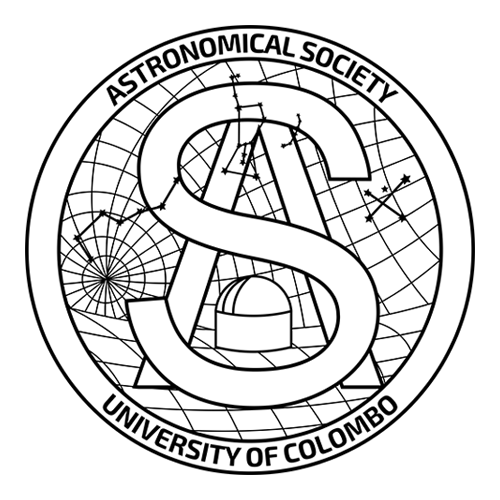The Earthlings have the chance of witnessing a greenish, dirty ball of snow roaming through the space. The Comet C/2021 A1 is named “Leonard” by the name of its observer Gregory Leonard of the Mount Lemmon infrared observatory. Leonard is on its show for the viewers of the Northern hemisphere and would be available for the spectators of the south in later December and January. It made its closest approach to the Earth on 12th December and will be approaching its perihelion on the 3rd of January 2022.
Although Leonard was able to be sighted using a small binocular in the dawn in early December, now (After 12th December) it is only visible after the sunset on the Southwestern horizon near the bright planet Venus. Although Leonard is a comet that could reach the 4th magnitude on an apparent magnitude scale which should be visible to the naked eye, it might be hard to observe it alone as comets are diffuse bodies that would not shine like stars. So, the best way to observe Leonard is with a pair of Binoculars or a small telescope. Sometimes you might be lucky enough to see it with your own eyes depending on the sky conditions.
The Leonard is comparatively a faster comet so that its apparent location in the sky is expected to be changed faster than a typical comet. The orbital period of this comet had been calculated as around 80,000 years. However, Leonard is believed to be ejected out from the solar system after mid-2022 keeping its way on a hyperbolic path.
-Thurunu Chalitha-

(Image generated through : https://theskylive.com/riseset?obj=cometleonard&geoid=1229989)
හරිත වර්ණයෙන් බැබලෙන අපිරිසිදු හිම බෝලයක් අභ්යවකාශය හරහා සැරිසරන ආකාරය දැකගැනීමේ අවස්ථාව මේ දිනවල පෘථිවි වාසීන්ට හිමිව තිබෙනවා. “Mount Lemmon” අධෝරක්ත නිරීක්ෂණාගාරයේ ග්රෙගරි ලියොනාඩ් විසින් පළමුවරට නිරීක්ෂණය කරන ලද “ලියොනාඩ්” ලෙස නම් ලැබූ C/2021 A1 වල්ගා තරුව මේ මස තුලදී උත්තර අර්ධගෝල වාසීන්ට දැකගත හැකිවන අතර樂威壯 දෙසැම්බර් අවසානයේ සහ ජනවාරි මාසයේ මුලදී දකුණු අර්ධගෝලයේ නිරීක්ෂකයින්犀利士 ට දැක බලා ගත හැකිය. ලියොනාඩ් වල්ගා තරුව දෙසැම්බර් 12 වන දින පෘථිවිය犀利士 ට සමීපතම ප්රවේශය සිදු කළ අතර 2022 ජනවාරි 3 වන දින එය තම ගමන් පථයේ සූර්යයාට ආසන්නතම ස්ථානය හරහා ගමන් කරනු ඇත .
ලියොනාඩ් වල්ගාතරුව කුඩා දුරදක්නයක් භාවිතයෙන් දෙසැම්බරයේ මුල් භාගයේ අලුයමේදී දැකගත හැකි වුවද,(දෙසැම්බර් 12 වැනිදායින් පසු) සුර්යයා බැස යාමත් සමගම දීප්තිමත් සිකුරු ග්රහලෝකය අසල නිරිතදිග ක්ෂිතිජයේ ස්ථානගත වී ඇති අයුරු දැක ගත හැකි වනු ඇත. ලියොනාඩ් වල්ගාතරුව, දෘෂ්ය දීප්ති විශාලන පරිමාණයෙ 4 වැනි විශාලත්වයට ළගා වූ වල්ගාතරුවක් වුවද, තාරකා මෙන් තීව්ර ආලෝකයක් නිකුත් නොකිරීම හා වල්ගා තරුවකට ලාක්ෂණික වූ විසිරුණු ආලෝක ස්වභාවය නිසා පියවි ඇසින් නිරීක්ෂණය කිරීම අපහසු විය හැකිය.තවද වැසි හෝ අධික වලාකුළු සහිත කාලගුණයක් පැවතියහොත් මෙය නිරීක්ෂණයට බාධා ඇති විය හැක. එසේ වුවද මෙම වල්ගාතරුව දෙනෙතියකින් හෝ කුඩා දුරේක්ෂයකින් නිරීක්ෂණය කළ හැකිවනු ඇත.
ලියොනාඩ犀利士 ් වල්ගා තරුව සාමාන්ය වල්ගා තරුවකට සාපේක්ෂව වේගවත් බැවින් අහසේ වල්ගාතරුව දිස්වන ස්ථානය වේගයෙන් වෙනස් වනු ඇතැයි අපේක්ෂා කෙරේ. මෙම වල්ගා තරුවේ ආවර්ථ කාලය වසර 80,000 ක් පමණ ලෙස ගණනය කර ඇත. කෙසේ වෙතත්, වල්ගාතරුවේ ගමන් පථයේ වන වෙනස් වීම් නිසා 2022 මැද භාගයෙන් පසු ලියොනාඩ් වල්ගා තරුව සෞරග්රහ මණ්ඩලයෙන් ඉවතට විසි වී බහුවලීය කක්ෂයක ගමන් කරනු ඇතැයි විශ්වාස කෙරේ.
_දැහැමි ගුණතිලක_
References:
[1] https://earthsky.org/astronomy-essentials/comet-leonard-might-become-2021s-brightest-2022/
[2] https://astronomy.com/news/observing/2021/12/comet-leonard-view-2021s-best-comet

